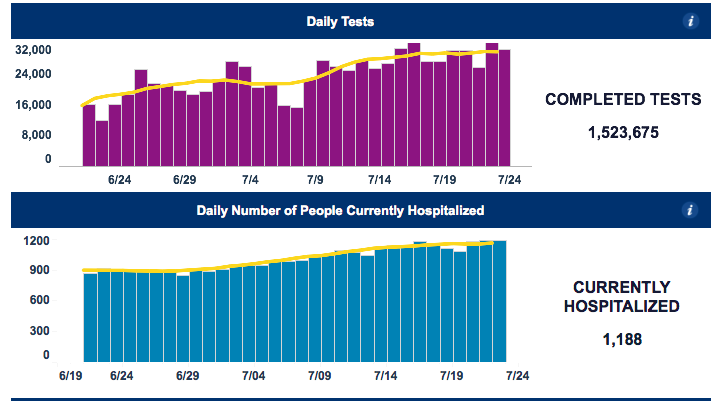The state of North Carolina hasn’t been doing a great job battling the spread of the coronavirus.
However, the North Carolina Department of Health and Human Services (NCDHHS) has just made improvements to the information tool that lets everyone know how bad the situation is.
This week, NCDHHS unveiled a new and improved “COVID-19 Dashboard” that includes more detailed information about hospital capacity and hospitalization trends –statewide as well as broken down by region.
One of the main concerns with the spread of the virus is that a large number of cases could overwhelm hospitals. The new hospitalization data will provide anyone who wants greater insight into the state’s hospital capacity as the citizens and medical community attempt to weather the pandemic.
The COVID-19 Dashboard can be found online at covid19.ncdhhs.gov/dashboard.
New information added to the website includes hospitalizations by region and trends in ICU bed use, and there’s also now a breakdown of hospitalizations due to suspected or confirmed COVID-19 cases.
State health officials survey hospitals across North Carolina every day through what’s known as the “Healthcare Preparedness Program,” which is used to gauge hospital capacity and bed availability in emergencies like the one the state is in now. That program recently switched to a more automated record keeping system that has allowed for tracking of more detailed information.
According to NCDHHS, the state’s online virus dashboard, which was first put online in March, is “meant a public-facing overview of the key metrics and capacities the state is monitoring to inform its pandemic response strategy and decision-making.”
The department also notes that the dashboard “has been used for reporting high-level statewide data regarding hospital capacity, including the number of people currently hospitalized, inpatient and Intensive Care Unit bed utilization and ventilator availability.”
Here are some other things people can view with the tool:
- Case and death counts searchable by county and ZIP code
- Case counts by date reported or date of specimen collection
- County map of ongoing outbreaks in congregate living settings, and
- Rollover functions to see daily numbers.


My math (which is suspect), indicates a hospitalization rate of .00078%. But this does not include hospitalizations to date. just currently. Nor does it include all those not tested.
Anyone have that info?